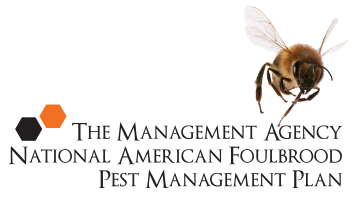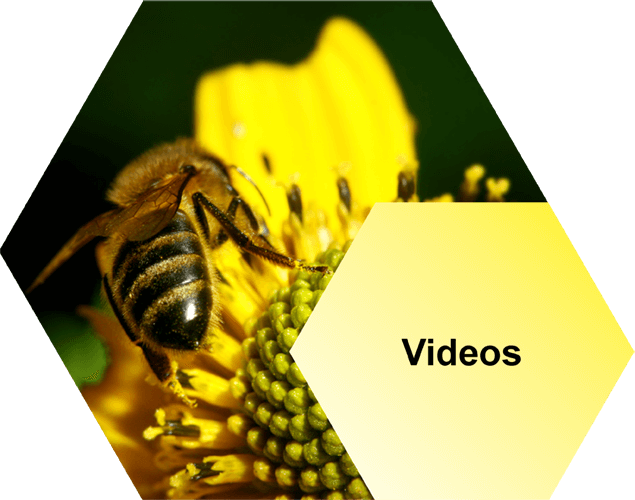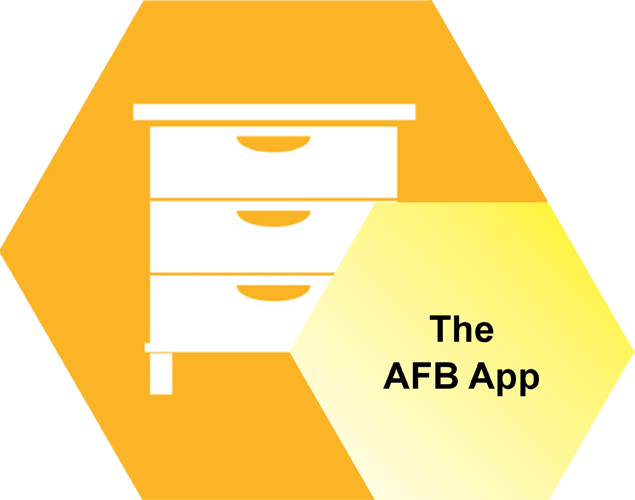Interpreting results
Test results
The test results obtained from the laboratory will be in the form of either a positive or negative result for AFB. It is also possible that the sample might be too contaminated with other bacteria to provide a reliable result. If the test is positive, the result may also include the number of AFB bacterial colonies that grew on the plate.
To be useful, the results need to be interpreted. The meaning of the result will depend on the type of material submitted.
Larval/pupal samples
Positive result
If a suspect larval/pupal sample returns a positive test for AFB, this means the colony that the larvae/pupae were taken from had AFB when the sample was taken. The colony should be destroyed even if no other diseased larvae or pupae can be found.
Negative result
If a larval sample returns a negative result it means the larvae or pupae that were submitted do not have AFB. It does not mean, however, that there are no other larvae or pupae in the hive with AFB.
Adult bee samples (individual hive)
Negative result
AFB spores do not germinate well on plates. The number of AFB bacterial colonies therefore provides only a relative measure of the number of spores present in the sample.
A negative result does not necessarily mean there are no AFB spores in the sample, only that there are too few to be detected. However, if there are too few spores to be detected, it is unlikely that the spores will cause an AFB infection in the sampled colony.
Bacterial culture tests are also not 100% accurate. An adult bee test may occasionally test negative for AFB spores even though the colony contains a few diseased larvae or pupae.
The test results only relate to the time that hive was sampled. Just because the colony didn’t have AFB when the sample was taken, this doesn’t mean that it will not have AFB at some later date.
Positive result
A positive result may or may not mean that the sampled colony has AFB. For instance, one of the bees in the sample could have drifted from an AFB hive that was nearby the hive that was sampled.
In 1991, live bee samples were tested from 1800 colonies belonging to seven different beekeepers. When the hives were inspected immediately after the test, only 35% of the colonies testing positive for AFB spores were found to contain obviously diseased larvae or pupae. However, more colonies that tested positive showed AFB symptoms during later inspections.
Counting the number of AFB bacterial colonies per plate can provide a better indication of hives likely to contain diseased larvae/pupae. Table 3 shows that the greater the number of colonies per plate, the greater the probability that the colony already shows visual signs of AFB. (Note: this study used 60 μl of sample material applied per plate.)
| Colonies/plate | Percent of colonies showing visual AFB symptoms |
|---|---|
| 0 | 1% |
| 1 | 1% |
| 2-10 | 7% |
| 11-100 | 16% |
| >100 | 82% |
If an adult bee test is positive, every brood frame in the hive should be checked thoroughly as soon as possible. If diseased larvae or pupae are found, the colony must be destroyed. If no diseased larvae or pupae are found, the colony should be marked and quarantined for one full year. At the end of that period, another complete brood check should be carried out together with a culture test using adult bees. If a hive tests positive again, but does not show visual signs of the disease, it should be left in quarantine for another full year.
During the quarantine period, no hive parts should be removed from the colony or placed on any other colony. It is also worth moving positive test colonies to a separate site where they can be inspected more often.
Adult bee samples (composite samples from a number of hives)
It is more difficult to interpret the results of composite samples, where bees from a number of hives have been tested at the same time. Because of the dilution factor of the bees from the clean colonies in the composite samples, composite tests are more likely to fail to detect the presence of an infected colony.
If there is only one AFB colony represented in a composite sample, then the results of the test can be interpreted by dividing the colonies/plate in Table 3 (above) by the number of colonies making up the composite sample. This will give the probability of the group of hives having one hive with AFB.
Several colonies with low spore counts may be in the composite sample, however, and when added together they will give a high spore count in the composite sample. For this reason, all that can be said with certainty is that a negative result in a composite sample indicates that the group of hives is unlikely to have AFB, and a positive result indicates that there may be one or more colonies in the group that have AFB. All hives in a positive composite sample should therefore be given a complete visual examination. If this fails to identify the AFB hive, then the hives should be retested individually.
Honey samples
Honey samples are less suitable for detecting AFB colonies than adult bee samples. This is because the honey may have been collected before the colony developed AFB. The relationship between spore levels in honey from an individual colony and the probability of the colony exhibiting AFB disease symptoms is unknown. Any colony that does test positive should be treated in the same way as a colony testing positive in an adult bee test (see above).
Tests of extracted honey tell even less about the colony the honey came from. Whether a positive sample with a high spore count came from a single colony with a very bad case of AFB or a number of colonies with light infections cannot be determined. If a positive sample can be traced back to a particular apiary, however, it can be useful in identifying which colonies should be given a visual examination.
If large numbers of extracted honey samples test positive, it suggests that there might be a significant AFB infection problem in the beekeeping outfit.
Take the AFB 5 minute quiz
How well do you know what you need to know about AFB and beekeeping? Take our short quiz and find out.
Videos
Our videos cover everything from your legal obligations to how to recognise AFB, collecting cell and bee samples and more.
Symptoms
There’s a lot of good information here, telling you everything you need to know about recognising AFB: the visual symptoms, smell of AFB and more.
Inspection and Diagnosis
Successfully eliminate AFB by telling the difference between symptoms of AFB and other brood diseases in the hive. We tell you the best methods for inspecting your hives.
The Law
New Zealand beekeepers have a number of legal obligations that must be met regarding AFB disease. Read the shortened list in summary, here.
Elimination
Most hives become infected because bees, honey or equipment have been put into a hive from another hive that is infected with AFB. Lower your chances of an AFB infection by reading this section.
AFB Recognition Course Info
Find out when the next AFB Recognition and Competency Courses, or Refresher Courses are available. These are held throughout the year in various New Zealand locations across the South Island and North Island.
The AFB App
Follow the link below to open the App. Once open to save to your device you need to bookmark the URL on your phone so you can find it easily again. Please click here to open.









